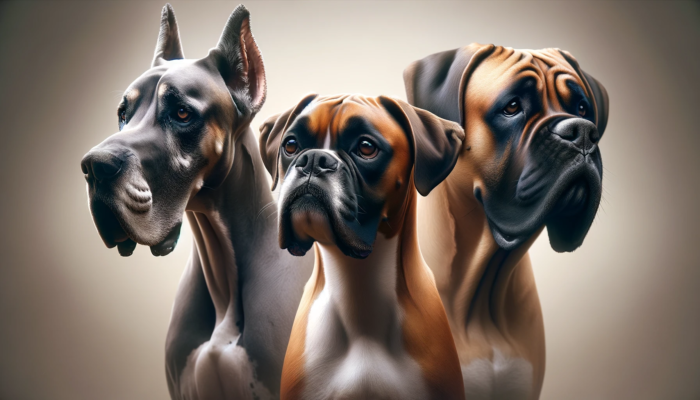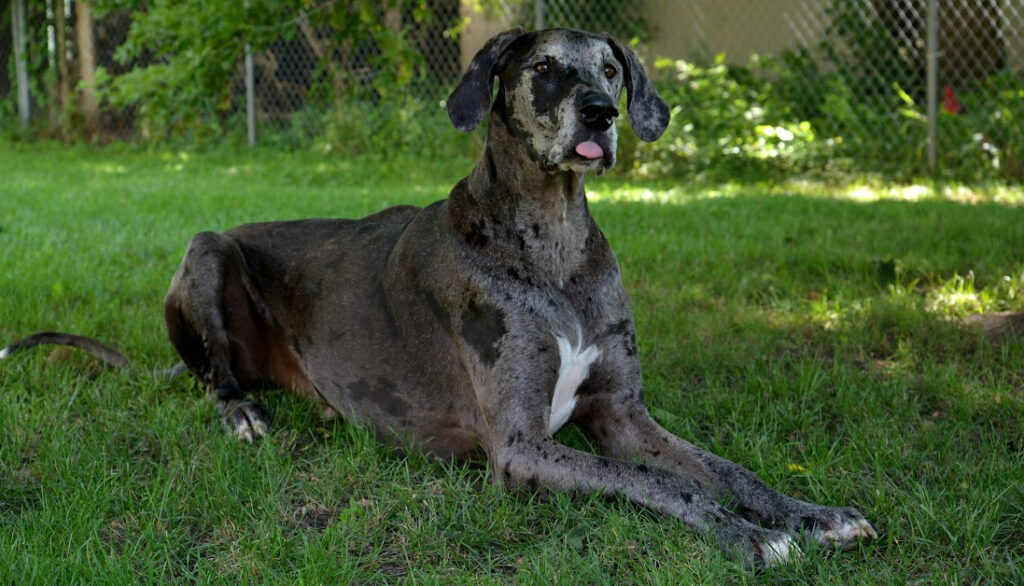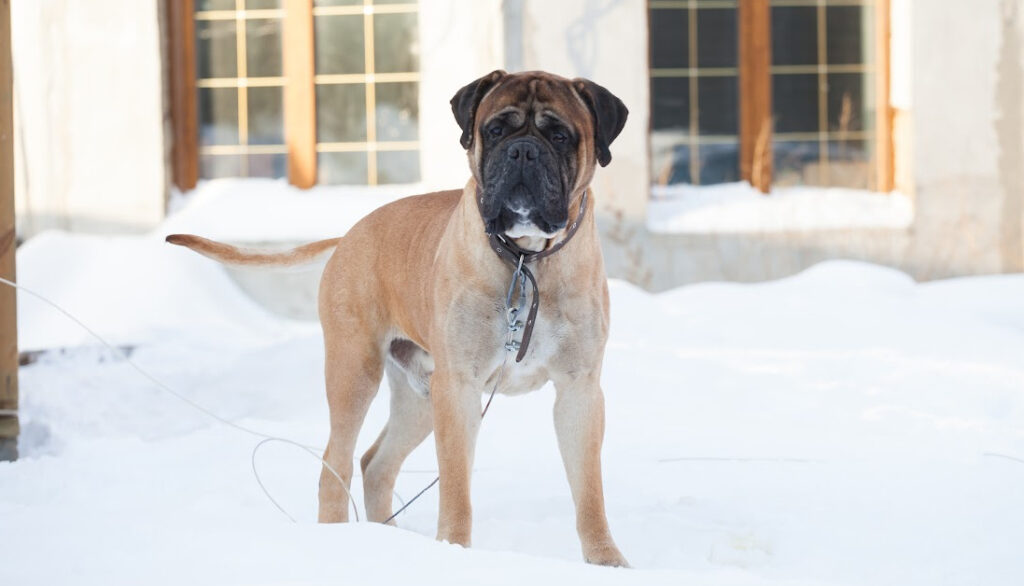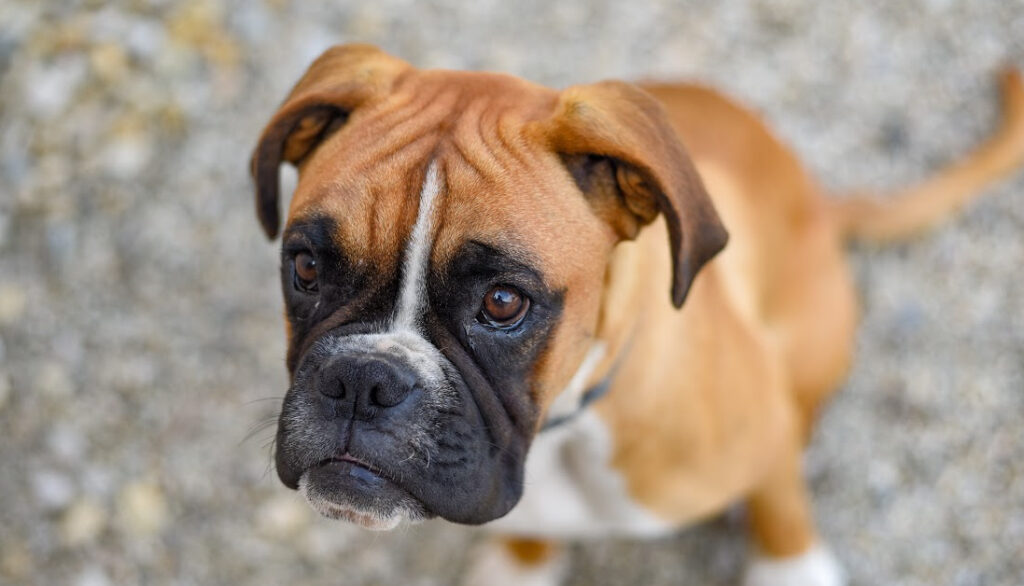When it comes to adding a new furry family member to your household, the considerations can be numerous. Size, temperament, activity level, and even the length of their hair can play significant roles in your decision. But what if you’re looking for a big dog, yet prefer a pet with low maintenance grooming needs? Don’t worry, I’ve got you covered! This guide will introduce you to the world of short hair large dog breeds, the perfect low maintenance giants for your home.

When we talk about short hair large dog breeds, we’re referring to dogs that typically weigh more than 50 pounds and have a coat that’s about 1 inch or shorter. These furry friends provide the best of both worlds – the grandeur and protectiveness of a large dog, combined with the easy grooming of a dog with short hair.
Owning a short hair large dog breed comes with a multitude of benefits. For instance, they’re usually less prone to matting and tangling, which means you can spend less time grooming and more time playing or relaxing with your pet. Additionally, their shedding is typically easier to manage than long-haired breeds, leaving you with less fur to clean up around your home. Also, because they’re larger, they tend to be quite sturdy and can be excellent playmates for active children or other pets.
Popular choices for short-haired large breeds include the Mastiff, known for their sheer size and gentle nature, and the Great Dane, revered as the “Apollo of Dogs” due to their majestic stature. These breeds, like many others we will explore, are incredibly family-friendly and fit well in homes with kids. However, keep in mind that each breed comes with its own unique characteristics and care requirements – all of which we’ll delve into in the coming sections of this guide.
As a holistic veterinarian, I’m here to guide you through everything you need to know about caring for these large, short-haired breeds – from health considerations, grooming and exercise needs, to training and nutritional requirements. Together, we’ll also explore options for adopting your own short-haired large dog. So grab a cup of tea, get comfy, and join me on this insightful journey into the world of short hair large dog breeds.

Imagine a gentle, friendly giant loping through your backyard, playing fetch with the kids, and snuggling up for a movie night on the couch. This isn’t just a scene from a family movie; it’s a reality for those who own short hair large dog breeds. They are the perfect family pets, offering the best of both worlds – the size and strength to bound around and play, and the low-maintenance grooming needs that save time and effort.
Characteristics of Family-Friendly Giants
When we talk about short hair large dog breeds, we’re referring to dogs that typically weigh over 50 pounds. These breeds are known for their robust, muscular bodies and short coats. But it’s not just their physical traits that make them appealing to families. Here’s what you’ll love about these family-friendly giants:
- Temperament: These breeds are often gentle, friendly, and patient, making them fantastic companions for children of all ages. They’re also protective, so they make great watchdogs.
- Energy Level: Despite their size, most large dogs are surprisingly laid-back, which means they’re excellent at adapting to your family’s activity level, whether that’s long hikes or lazy Sundays.
- Trainability: Short hair large dog breeds are typically intelligent and eager to please, making training sessions a breeze.
Popular Choices for Homes with Children
Below are some popular short hair large dog breeds that are beloved by families worldwide for their exceptional temperaments and low maintenance coats:
- Boxer: Known for their playful and energetic nature, Boxers are a hit with children. They’re protective yet friendly, and their short coat requires minimal grooming.
- Labrador Retriever: Labs are renowned for their friendly and outgoing nature. They are intelligent, easy to train, and their short, dense coat is low maintenance.
- Great Dane: Often referred to as gentle giants, Great Danes are known for their sweet and patient nature with kids. Despite their size, they require minimal grooming.
- Rottweiler: Rottweilers are protective, loving, and great with kids they’ve been raised with. They’re intelligent, meaning they respond well to training, and their short hair is low maintenance.
- Mastiff: Mastiffs are calm, gentle, and great with kids. Their short hair is easy to maintain, but due to their size, they do shed quite a bit.
Owning a short hair large dog breed can be a rewarding experience. They bring joy, protection, and companionship to your home. Plus, their low-maintenance coats save you time and effort in grooming. So, if you’re looking for a new addition to your family, one of these breeds could be the perfect fit.
The Ultimate List of Short Hair Large Dog Breeds
When it comes to short hair large dog breeds, there’s a wealth of variety out there. Each breed has its unique characteristics and appeal. Today, let’s focus on two categories that are particularly loved by dog enthusiasts – mastiffs and the Great Danes.
Mastiff Breeds: Gentle Giants with Short Coats
Mastiffs, often referred to as the “gentle giants,” are one of the most ancient types of dogs. Their history traces back to 5000 BC. Despite their imposing size, mastiffs are known for their gentle and good-natured temperament. They have a muscular build, broad skull, and a short dense coat which is available in colors like apricot, fawn, or brindle.
- English Mastiff: The English Mastiff is one of the heaviest breeds. These dogs are powerful and strong, yet affectionate, good-natured, and calm. Their short coats require minimal grooming.
- Bullmastiff: Bullmastiffs are large, solid dogs known for their physical strength, protection instincts, and extreme family loyalty. They have a short, dense coat that comes in a few color variations.
- Neapolitan Mastiff: Known for their loose, wrinkly skin and imposing size, Neapolitan Mastiffs are calm, steady, and loyal dogs. Their short hair is straight and dense, making them one of the less demanding breeds in terms of grooming.
Great Dane: The Apollo of Dogs
Next on our list is the Great Dane, also known as the “Apollo of Dogs” due to its towering height and majestic appearance. Despite their size, these dogs are known for their friendly and gentle nature. They are not as heavy as a Mastiff but are taller and more slender. They can reach up to 32 inches in height and their short, thick, and glossy coat comes in various colors including brindle, fawn, blue, black, harlequin, and mantle.
Great Danes are sociable, friendly, and eager to please. They are fantastic with children and make excellent family pets. However, due to their large size, they require ample space to move around. Their short hair requires minimum grooming, usually just an occasional bath and regular brushing to remove loose hair.
In a nutshell, whether you choose a Mastiff or a Great Dane, these short hair large dog breeds are sure to bring joy and companionship into your home. They each offer their unique charm and qualities, and despite their imposing size, they are known for their mild and gentle disposition. A word of caution though, always remember that these breeds require plenty of space to move around, a balanced diet to maintain their health, and above all, heaps of love and affection.
Health Considerations for Short Hair Large Dog Breeds
Common Health Issues in Large Breeds
Large dog breeds with short hair, just like any other dogs, can be prone to certain health issues. These are typically related to their size and genetic predispositions. Here are some common health problems in large short-haired breeds:
- Joint Issues: Due to their large size, many large breeds suffer from hip and elbow dysplasia, a condition where the joints do not develop properly leading to arthritis in later life.
- Heart Conditions: Big dogs can be susceptible to heart diseases like dilated cardiomyopathy which causes the heart to enlarge and not pump blood efficiently.
- Bloating: Large breed dogs, especially those with deep chests, are at a higher risk for Gastric Dilatation-Volvulus (GDV), also known as bloat. This is a life-threatening condition that requires immediate veterinary attention.
Preventative Care for a Healthy Life
The key to a long and healthy life for large dogs with short hair is preventative care. Here are some tips to help ensure your dog remains healthy:
- Regular Vet Checks: Regular check-ups allow vets to catch any potential health issues early. This is especially important for large breeds as they are prone to certain health conditions.
- Proper Nutrition: A well-balanced diet can help maintain your dog’s overall health and prevent obesity, which can lead to additional health problems in large breeds.
- Daily Exercise: Despite their size, large breeds need regular exercise to maintain a healthy weight and keep their joints healthy. Make sure to tailor the exercise to the breed’s needs.
- Health Tests: Genetic testing can help identify potential breed-specific health issues. Breeds like Mastiffs and Great Danes should be tested for hip dysplasia, heart disorders and certain types of cancer.
- Mental Stimulation: Large breeds like the Mastiff and Great Dane are intelligent and need mental stimulation to prevent boredom and related behavioral issues. Puzzle toys and training exercises can help keep their minds sharp.
Remember, the health of your short hair large dog breed will depend largely on the care they get from you. Regular veterinary care, a proper diet, and regular exercise are all crucial in helping them live a long and healthy life. Don’t forget to show them plenty of love and attention, too!

Grooming and Care for Short Hair Large Dogs
Grooming Tips for Low Maintenance Coats
When it comes to short hair large dog breeds, their grooming needs are often less demanding than their long-haired counterparts. However, that doesn’t mean you can neglect their coat care. Here are some grooming tips to keep your furry companion looking their best:
- Regular Brushing: Even though your large dog has a short coat, it’s still crucial to brush it regularly. This helps remove loose hair, distribute natural oils, and keep their skin healthy. A rubber grooming mitt or a bristle brush usually works best for short-haired breeds.
- Bathing: Bathe your dog every 6-8 weeks or as needed. Use a dog-friendly shampoo to maintain the natural oils in their skin and coat.
- Nail Trimming: Large dogs often have strong nails, but they still need regular trimming. If you can hear your dog’s nails clicking on the floor, it’s time for a trim.
- Ear Cleaning: Large breeds, especially those with floppy ears, can be prone to ear infections. Regularly check and clean their ears to prevent any issues.
- Dental Care: Don’t forget about dental care! Regular brushing and dental chews can help keep your dog’s teeth clean and healthy.
Exercise Needs of Large Breeds with Short Hair
While short hair large dog breeds may be relatively low maintenance in terms of grooming, they often have high energy levels and need plenty of exercise. Here are some tips on how to keep your big, short-haired pup in tip-top shape:
- Regular Walks: Aim for at least one long walk or two shorter walks per day. This helps keep your dog’s weight in check and prevents boredom.
- Play Time: Large breeds love to play. Whether it’s fetch, tug-of-war, or a game of chase, playtime is a great way for your dog to burn off some energy.
- Training Sessions: Mental exercise is just as important as physical exercise. Regular training sessions not only keep your dog mentally stimulated but also help reinforce good behavior.
- Off-Leash Time: If possible, give your dog some off-leash time in a safe, enclosed area. This allows them to run freely and expend energy.
Remember, each dog is unique and may have different exercise needs. Always monitor your dog during exercise to ensure they’re not overexerting themselves.
In the end, caring for short hair large dog breeds involves a balance of regular grooming and ample exercise. By meeting these needs, you’ll have a happy, healthy, and well-groomed companion by your side.
Training and Socializing Short Hair Large Dog Breeds
Training Tips for Large Breed Dogs
Raising a short hair large dog breed, like Mastiffs or Great Danes, can be an exciting journey. However, their size and strength require specific attention during training. Here are a few tips:
- Start Early: Large breeds grow quickly, so start training as soon as you bring your puppy home.
- Consistency is Key: Whether it’s about following commands or house rules, consistency is crucial for large breeds.
- Positive Reinforcement: Reward-based training works best. Treats, praises, or playtimes make great rewards.
- Socialization: Expose them to different environments, people, and animals to make them well-rounded.
Importance of Early Socialization
Socialization is a critical aspect of training that often goes overlooked. For short hair large dog breeds, early and ongoing socialization is essential. These breeds are often protective, and without proper socialization, they can become wary of strangers and unfamiliar situations.
The purpose of socialization is to help your dog feel comfortable and safe in a wide range of circumstances. Eventually, your dog should react with curiosity rather than fear to new experiences.
You can socialize your pet by exposing them to various people, places, and situations. Keep these experiences positive for your dog. Introduce them gradually to prevent overwhelming them.
For example, start by inviting friends over to visit and let your dog interact with them. Take your pet to different environments like parks, busy streets, or pet stores. Invite friendly, vaccinated dogs over for playdates or enroll your pet in a doggie daycare.
Remember, socialization is not a one-time event but a lifelong process. So, continue exposing your dog to diverse experiences throughout their life.
Understanding the specific needs of short hair large dog breeds can be challenging, but don’t worry, you’ve got this! With patience, consistency, and a lot of love, your giant companion will grow up to be a well-adjusted, well-behaved member of your family.
Lastly, remember to enjoy the journey. Training a large breed dog might be demanding at times, but it’s also an opportunity to build a deep, lasting bond with your furry friend.
Next Steps
Remember, training and socialization are just two aspects of raising a short hair large dog breed. Your giant companion will also have unique nutritional needs, health considerations, and grooming requirements. So, stay tuned for the next sections where we’ll dive deeper into these topics!

Nutritional Needs of Short Hair Large Dog Breeds
As the proud parent of a short hair large dog breed, you understand that these gentle giants have specific nutritional needs. These breeds require a balanced diet to maintain a healthy weight and support their overall health. It’s essential to pay attention to what they eat and ensure they receive the right amount of vitamins and supplements to ensure optimal health.
Diet Requirements for Maintaining Healthy Weight
Most short hair large dog breeds are active and need a diet rich in protein to keep their muscles strong. Foods with high-quality protein sources, such as chicken, beef, or fish, should constitute a significant portion of their diet.
Short hair large dogs also need a sensible amount of healthy fats for energy. Omega-3 and Omega-6 fatty acids are particularly beneficial as they support brain health, keep the skin and coat healthy, and reduce inflammation.
Carbohydrates provide additional energy for your large dog, but choose complex carbs like sweet potatoes and brown rice over simple sugars. These digest slower and keep your dog feeling full longer.
Remember, though, that portion control is critical. Even the healthiest food can lead to weight gain if your dog eats too much of it. Overweight and obesity can lead to numerous health issues, including heart diseases, diabetes, and joint problems, so keep an eye on their weight.
Supplements and Vitamins for Optimal Health
Even with a balanced diet, your short hair large dog may benefit from certain supplements and vitamins.
Glucosamine and chondroitin are two supplements often recommended for large breeds. These compounds support joint health, which is crucial for these dogs prone to hip and elbow dysplasia.
Fish oil supplements can also be beneficial for your dog. They’re rich in Omega-3 fatty acids, which help maintain skin and coat health, support brain development, and reduce inflammation.
Vitamins A, C, and E are antioxidants that can help boost your dog’s immune system. Vitamin D is also crucial for bone health. However, it’s important to consult with your vet before starting any supplement regimen. Too much of certain vitamins can be harmful.
Probiotics can help maintain a healthy gut flora, improving digestion and nutrient absorption. This can be particularly beneficial for large breeds prone to bloating.
Remember, each dog is unique, and what works for one may not work for another. It’s always best to consult with your vet or a canine nutritionist to determine the best diet and supplement plan for your short hair large breed.
In summary, a balanced diet and the right supplements can go a long way in ensuring your short hair large breed dog lives a long, healthy life. Always monitor their weight and adjust their portions as necessary, and consult with your vet before starting them on any new supplement regimen. Your large breed furry friend is counting on you to help them live their best life!
Adopting Short Hair Large Dog Breeds
Ready to make your home complete with a short hair large dog breed? Well, the journey is as rewarding as it is exciting. This section will guide you on where to find your new furry friend and how to prepare your home for their arrival.
Where to Find Short Hair Large Breed Dogs for Adoption
Adopting a dog is not just about bringing a new pet home, it’s about saving a life and creating a bond that lasts a lifetime. There are plenty of options to find your ideal short hair large dog breeds.
- Animal Shelters: These are excellent places to begin your search. Shelters house dogs of different breeds, ages, and sizes, including large short-haired breeds. You might find a mixed breed that perfectly suits your family.
- Rescue Organizations: These are breed-specific groups that rescue large dog breeds with short hair such as Mastiffs and Great Danes. They take in dogs from a variety of backgrounds, including those abandoned by their owners or found wandering the streets.
- Breeders: If you have a particular breed in mind, reaching out to a reputable breeder could be your best bet. Remember, a good breeder should be able to provide health clearances for both parents of the puppy, proving they’ve been tested for common health problems.
Preparing Your Home for a Large Breed Dog
Before your new companion steps paw into your home, it’s vital to prepare your space. Large dogs need more room and may encounter different hazards in a home compared to small dogs. Here’s a checklist to help you prepare:
- Space: Large dogs need plenty of space. Make sure you have a suitable area for them to sleep and eat. A big backyard for them to run around and play is a plus.
- Safety: Puppy-proof your house by removing any toxic plants, chemicals, or small items that the dog might chew on or swallow.
- Accessories: Buy the right-sized collar, leash, and food bowls. A comfortable dog bed is also essential to cater to their larger frame.
- Food: Large breed dogs have special dietary needs. Invest in quality dog food that meets the nutritional requirements of large breeds.
Deciding to adopt a short hair large dog breed can be one of the most fulfilling decisions you’ll ever make. They bring joy, companionship, and a sense of security to your home. Moreover, they require less grooming, making them a perfect fit for those leading busy lives or for those who prefer low maintenance pets.
Prepare your home with love and patience, and you’ll be ready to welcome your new family member. You’ll be rewarded with a loyal friend who’ll provide you with unending love and companionship. So, are you ready for the wonderful adventure that awaits with your short hair large dog breed?
Frequently Asked Questions
Q1: What are some examples of short hair large dog breeds?
A: Some examples include the Rottweiler, Great Dane, Boxer, and Doberman Pinscher.
Q2: Are short hair large dog breeds low maintenance?
A: Generally, short hair large dog breeds are considered low maintenance in terms of grooming. However, they may require regular exercise and a balanced diet to maintain their health.
Q3: Can short hair large dog breeds adapt to apartment living?
A: While some short hair large dog breeds can adapt to apartment living, others may require more space due to their size and energy levels. It’s important to research each breed’s specific needs before making a decision.
Q4: What are the health concerns associated with short hair large dog breeds?
A: Some common health issues include hip dysplasia, heart problems, and certain types of cancer. Regular veterinary check-ups are essential for early detection and treatment.
Q5: How much exercise do short hair large dog breeds require?
A: Most large dog breeds require a significant amount of exercise to stay healthy and happy. This can range from a long walk to more strenuous activities like running or playing fetch.
Dr. Candy, a holistic veterinarian and certified raw dog food nutrition specialist, graduated from Oklahoma State University in 2009 with a DVM and has since specialized in companion animal nutrition, advocating for species-specific diets. With a background in wildlife rehabilitation and oil spill response, she combines holistic health and conventional medicine in her unique approach to treating chronic diseases, allergies, and autoimmune conditions in pets. As the owner of a veterinary practice in Colorado and an author, Dr. Candy is dedicated to educating pet parents and improving the health and happiness of animals.




